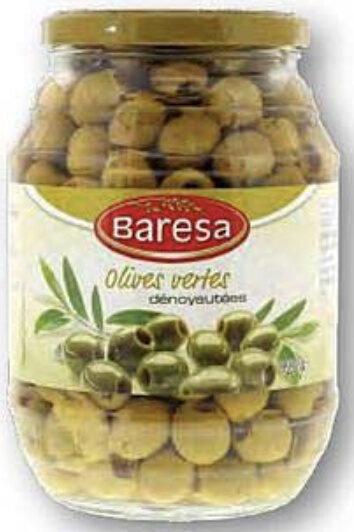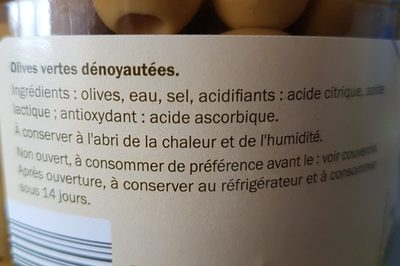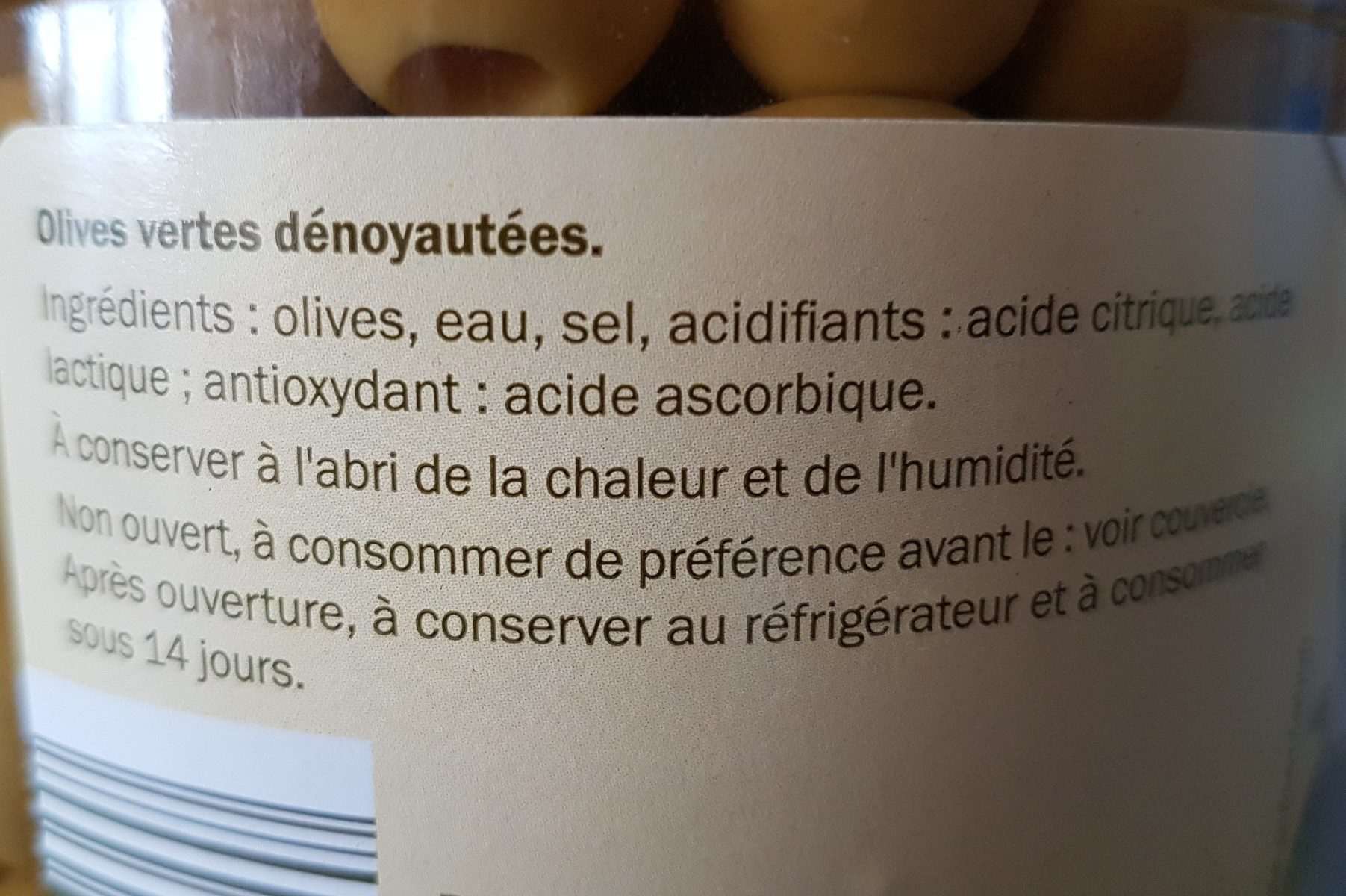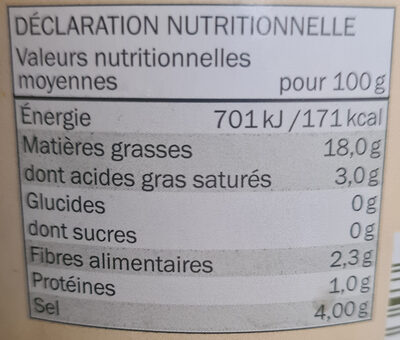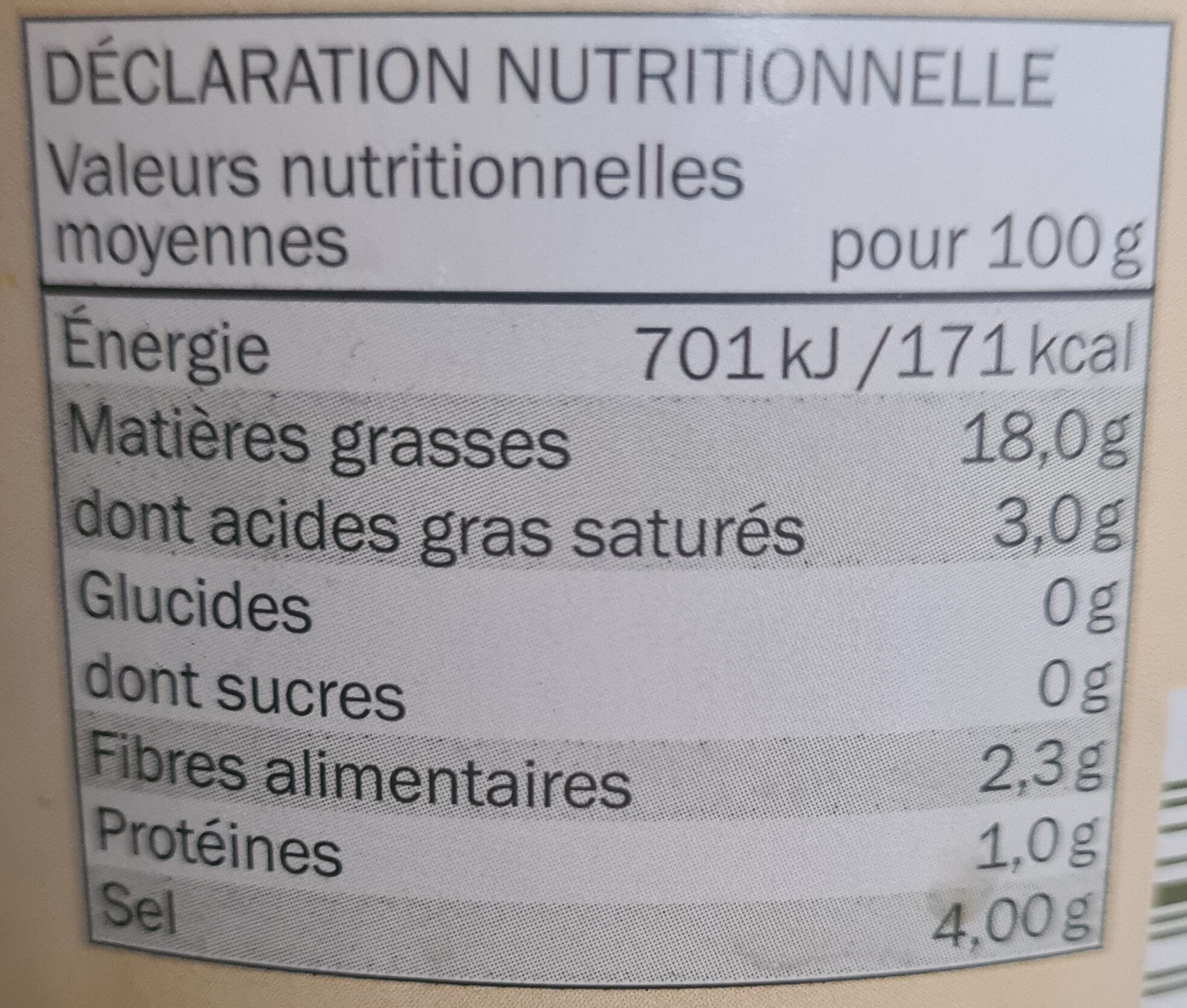Olives vertes - Baresa - 950 g
Ambiguous barcode: This product has a Restricted Circulation Number barcode for products within a company. This means that different producers and stores can use the same barcode for different products.
×
This product page is not complete. You can help to complete it by editing it and adding more data from the photos we have, or by taking more photos using the app for Android or iPhone/iPad. Thank you!
×
Côd bar: 20033347
Common name: Olives vertes dénoyautées - Produit pasteurisé. Classe commerciale: I (premier choix).
Quantity: 950 g
Packaging: fr:Bocal en verre, fr:Bouchon en métal
Brandiau: Baresa
Categorïau: en:Plant-based foods and beverages, en:Plant-based foods, en:Pickles, en:Olive tree products, en:Plant-based pickles, en:Olives, en:Green olives, en:Pitted olives, en:Green pitted olives
Origin of ingredients: Sbaen
Stores: Lidl
Countries where sold: Ffrainc, Y Deyrnas Unedig
Matching with your preferences
Environment
Carbon footprint
Packaging
Transportation
Report a problem
Data sources
Product added on gan kamounia
Last edit of product page on gan quechoisir.
Golygwyd y tudalen cynnyrch hefyd gan bcatelin, date-limite-app, ecoscore-impact-estimator, inf, kiliweb, manu1400, misterwhite, openfoodfacts-contributors, packbot, roto, sebleouf, tacite, teolemon, yuka.JLZTIODTAvB_F8Ps3J0EwRSKNf_YP81CRm4kow, yuka.Nb1mZYa3JtIiMvPejKhp-mGLLtbOPOZaOVABog, yuka.RjZNdUVZY3RvUHNxdWZZZ3BBanZ4TU5OLzVEd1J6TzRKZVlCSVE9PQ, yuka.RzRVT05iZzhudVVEc3ZNczB6TGF3K05abVorR0FUcXNFYklxSVE9PQ, yuka.UVBzUE1ZSmM5dGRWbGZNUHpqSFYydFJVOWE2a1dIMm9GdXNRSWc9PQ, yuka.UXI5Wkg3Z3NnUDREdC8wNi95ekY0b04yMk1XNFIwMlZDL3MySVE9PQ, yuka.UnI0Y01xODVnK2t0bXZRYjF5THUwY3dxeUpPcmVFS1dDTTBQSVE9PQ, yuka.UnZ3ZUNJWlFxOWdOb05odTRpTDZ5UFJZNTQ2NGNFSHNET3dwSVE9PQ, yuka.XKAcANWABNIrA_GCy6Ea9jmWRezBMfwFQi8_og, yuka.ZDVnK05hNFJ1dEJSbjhJZnhoSFAvL1lwNThTeEExT1NjdWd5SVE9PQ, yuka.ZWE4NUhxMHYvY0JVbDhNejhDM1V5L2Q0eXFXR1prNm5Bcm9YSWc9PQ, yuka.ZkxoYUhZY3p2Y2t6dC9NUDdnbnJ3dEpQM2J1QVVrcVhJTkFOSWc9PQ, yuka.Zlk4OE01a3Urdnd4aHZjYzBDanczUFZ3eXJDTlExaTdPK3RKSVE9PQ, yuka.sY2b0xO6T85zoF3NwEKvlhdKfuvwv2LpFwH4lnLR396VdrfacPZt3rbVEqo, yuka.sY2b0xO6T85zoF3NwEKvllFMTdv9rj_FCBbvyHWkw9GNB7jpRvci6YjRN6g, yuka.sY2b0xO6T85zoF3NwEKvllZOfcWFh2iZChr6hWKs5fWjCLD4ZvpV87TDM6s, yuka.sY2b0xO6T85zoF3NwEKvlmEWDd3PoxfqMhrTx2aoysezJczWWopi6YuiNqs, yuka.sY2b0xO6T85zoF3NwEKvlmhGAvHmsD3qPQ34qBeK5fmDcMb6Qo5duI3XEqo, yuka.sY2b0xO6T85zoF3NwEKvlnRKSt7SnxvIPCH5okOl2IaoBYDEfvRq6Y7cKag, yukafix.

